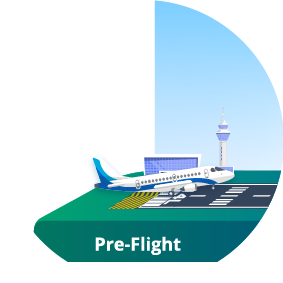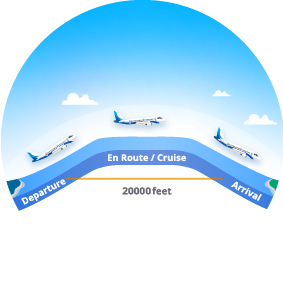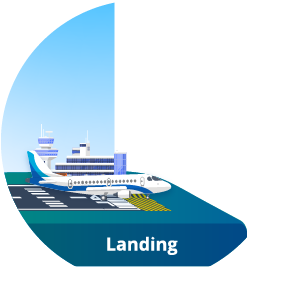Departure / En Route / Cruise / Arrival
- Approach control and area control are both radar control unit. Approach control is responsible for the taking off and climbing, as well as the arrival and descending of aircraft at or below 20,000 feet. Area control is in charge of aircraft above 20,000 feet, including most of the level flying and cruising stage.
- ATMS receive information from the civil/military radar and ADS-B broadcast from the aircraft, compare them with the flight plan data in the system to identify the aircraft and its position in real-time so that the controller can control the aircraft and apply adequate separation.
- Approach and area controllers maintain contact with the aircraft by radio communication via Digital Voice Communication Switching System (DVCSS), providing flight instructions, weather avoidance and emergency assistance to ensure a safe and smooth traffic flow.
- ATMS automatically hands over air traffic control information to nearby air traffic control center via AIDC, or the controller will do so verbally via DVCSS.
- During the flight process, the aircraft will follow the airway constructed by ground NAVAID (VOR, NDB etc.), or rely on RNAV Route navigated by satellite.




 1 2 3 4 5
1 2 3 4 5




